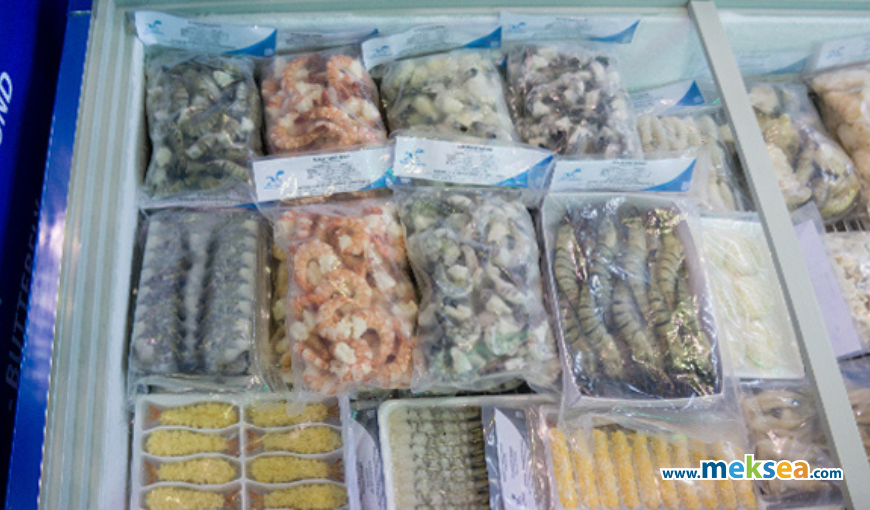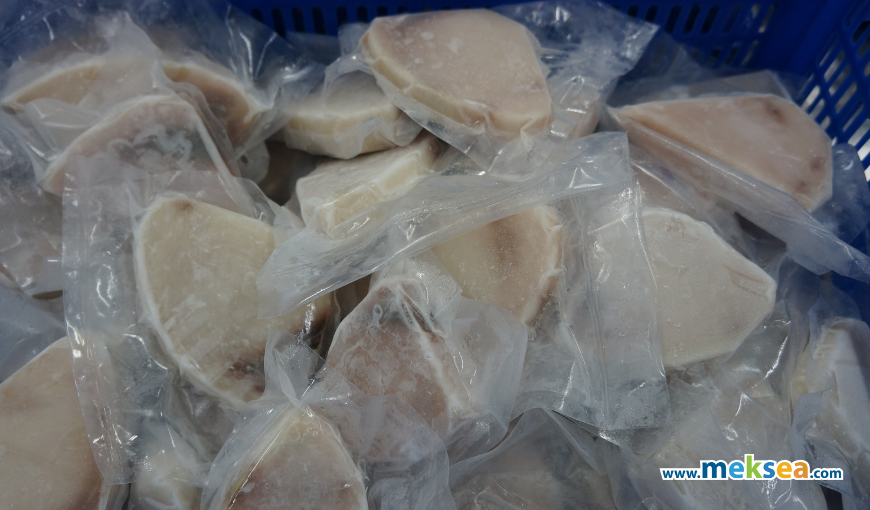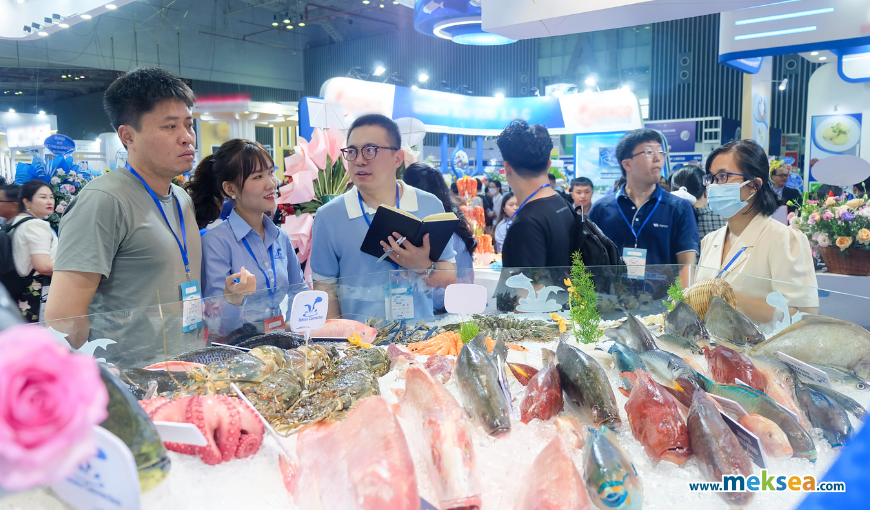Why frozen seafood is the dominant force in Global seafood trade?
Frozen seafood has rapidly emerged as a key driver of growth and innovation. As consumer preferences shift towards convenience, health, and sustainability, the demand for high-quality frozen seafood continues to surge. In 2023, total the value of exports of fishery and aquaculture products of global is 178680 million USD, increasing 0.3 percent compare to 2022.
Quick view
I. Why frozen seafood is the dominant force in Global seafood trade?
1. The Growing Demand for Frozen Seafood
One of the primary reasons frozen seafood is dominating the global market is the surge in demand across major regions. According to industry reports, the global frozen seafood market is expected to reach unprecedented levels by 2025, driven by:
- Busy lifestyles and the need for quick, easy-to-prepare meals
- Increased awareness of the health benefits of seafood
- Rising purchasing power in emerging markets like Southeast Asia, the Middle East, and Africa

The Growing Demand for Frozen Seafood
Consumers today expect freshness, convenience, and quality, all of which frozen seafood provides. Unlike fresh seafood, frozen products maintain their texture, taste, and nutritional value for longer periods, making them highly attractive to modern buyers.
2. Technological Advances in Freezing and Storage
Another major factor fueling the rise of frozen seafood is technological innovation. Advanced freezing methods like Individual Quick Freezing (IQF) and Cryogenic Freezing have transformed the industry. These technologies ensure that seafood products retain their original quality, flavor, and appearance even after months in storage.
Moreover, improvements in cold chain logistics. Such as temperature monitoring systems, GPS tracking, and real-time supply chain management to ensure that frozen seafood reaches consumers in perfect condition, regardless of distance. These technological developments make it possible for exporters to access global markets more efficiently and cost-effectively.
3. Sustainability and reduced food waste
Sustainability is another reason frozen seafood is becoming the future of global trade. Freezing seafood immediately after harvest minimizes spoilage and extends shelf life, significantly reducing food waste. In an era where environmental responsibility is a top priority, frozen seafood offers a solution that aligns with sustainable practices.
Additionally, frozen seafood can help balance supply and demand, allowing fisheries to operate more efficiently without overfishing. Exporters can store inventory during high-yield seasons and release it according to market needs, helping to stabilize prices and protect marine ecosystems.
4. Access to Distant and Emerging Markets
Frozen seafood provides access to remote and emerging markets that would otherwise struggle to receive fresh products. Inland cities, landlocked countries, and regions with limited access to fresh seafood now have year-round availability of high-quality products thanks to advanced freezing and distribution networks.
This global accessibility creates new opportunities for seafood exporters to expand into untapped markets, diversify revenue streams, and build a stronger global presence. As infrastructure improves in developing regions, the demand for reliable, high-quality frozen seafood will only continue to grow.

Access to Distant and Emerging Markets
5. Meeting changing consumer preferences
Today’s consumers are more informed and selective than ever before. They seek seafood products that are:
- Convenient: Ready-to-cook or ready-to-eat options
- Healthy: High in protein, low in fat, free of chemicals
- Safe: Traceable sourcing and certified production standards
- Ethical: Sustainability certifications like MSC, ASC, BAP
Frozen seafood fits all of these criteria perfectly. Retailers and food service operators are responding by expanding their frozen seafood selections, offering everything from pre-marinated shrimp skewers to premium-grade frozen tuna steaks. The premiumization trend in the frozen category also means higher profit margins for businesses that innovate and invest in quality.
II. Challenges and Opportunities
1. Challenges of frozen seafood
While frozen seafood offers tremendous potential, exporters must also navigate certain challenges:
- Regulatory compliance: Strict food safety and labeling standards
- Competition: Growing rivalry among leading seafood exporting countries
- Logistics costs: Maintaining an unbroken cold chain across long distances
However, these challenges can be turned into opportunities by:
- Investing in certifications like HACCP, MSC, ASC to assure buyers of product quality and ethical sourcing
- Adopting smart logistics solutions to optimize transportation and storage
- Building strong branding and marketing strategies to differentiate products in a crowded market
2. The Future Outlook: Frozen Seafood Leading the Way
Looking ahead, the frozen seafood sector is set for continued expansion. Key trends that will shape the future include:
- Increased investment in eco-friendly packaging and sustainable production methods
- Growth of e-commerce and direct-to-consumer frozen seafood delivery services
- Emergence of innovative products, such as plant-based seafood alternatives blended with frozen seafood
Frozen seafood’s versatility, long shelf life, and ability to preserve nutritional value position it as the ideal choice for meeting global seafood demand sustainably and efficiently.
Frozen seafood is not just a temporary trend; it is the future of global seafood trade. As consumers continue to prioritize convenience, health, and sustainability, frozen seafood offers solutions that fresh products simply cannot match. For exporters, embracing frozen seafood is no longer optional. It is essential for growth, competitiveness, and long-term success in the international market.
By leveraging cutting-edge technology, investing in sustainable practices, and adapting to changing consumer preferences, seafood businesses can unlock immense opportunities in the thriving frozen seafood sector.
III. The general of frozen seafood in Vietnam/ Meksea – The ideal distributor for frozen seafood
1. Frozen seafood in Vietnam
Vietnam is among the world’s leading seafood producers, thanks to its long coastline of over 3,200 km and an extensive river network that supports both aquaculture and marine fishing. According to VASEP, Vietnam exports billions of USD worth of seafood annually, including key frozen items such as shrimp, pangasius (basa fish), tuna, squid, octopus, and other marine fish. In 2024, Viet Nam’s seafood export in 2024 surpassed its target of US$10 billion despite many challenges related to the market, logistics and materials. Export of various product groups saw good growth, such as shrimp export at around $4 billion (up 16.7 percent), tra fish at 2 billion (up 8.9 percent), and tuna at 1 billion (up 18 percent).
2. Meksea – The ideal distributor for frozen seafood
Mekong Seafood Connection is a leading distributor of frozen seafood in the Vietnamese seafood industry. Meksea has distributed to many international countries with high-quality products. We pride ourselves on being a trusted partner for businesses worldwide, offering a diverse range of premium seafood that is responsibly sourced from the rich aquatic ecosystems of the Mekong Delta and beyond.

Meksea – The ideal distributor for frozen seafood
If you want to import frozen seafood from the fresh seafood market especially Vietnam. Meksea certainly is the best way for you. Meksea makes different specifications and brands of customers, we also have our own brand to be globally distributed. We are confident to become a high quality and most reliable frozen seafood distributor in Viet Nam for supermarkets and importers in the world where requirements on quality, health safety and good products are put in first priority. Meksea provides the highest sustainability toward quality, product specification and delivery time for partners to have a reliable supply chain for business development.
Vietnam’s seafood exports 2025: Opportunities and challenges
Jan 2025: CPTPP Overtakes U.S. as Vietnam’s Second-Largest Pangasius Import Market
Vietnamese Seafood for Europe – Meet MEKSEA at SEG 2025
Tuna Export 2025: Innovation for Accelerated Success
—————————————————————————————-
Contact Meksea now to arrange a meeting and we can assist you in registering for this seafood event.
Mr. Hoang Duy – Commercial Director
Mobile/WhatsApp/Wechat: + 84 903 872 469
Email: hoang@mekseaconnection.com

